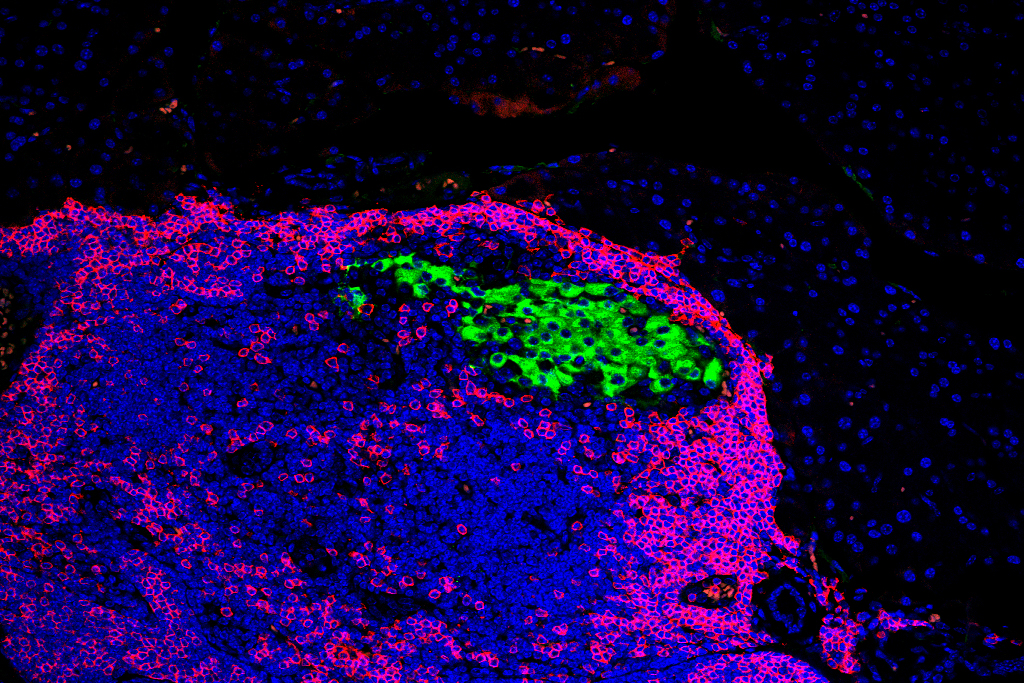‘Starry Night’ or Viral Infection?
Resembling a dotted, night sky constellation, fluorescent speckled cells (pictured above) help researchers track a viral spread.
With microscopic similarities to van Gogh’s The Starry Night, such imagery — and how it comes to be — remains a focus for Adam Swick, a Ph.D. student in John Yin’s lab in WID’s Systems Biology research group.
Swick and colleagues examine how viruses spread from cell to cell and how the cells’ ability to ward off viral invaders affects the speed at which infections spread.
This microscope image pictures approximately 50,000 human prostate cells grown in culture. The cells have been engineered to glow green, or fluoresce, when a gene involved in anti-viral defense is activated, either by an invading virus or a chemical warning signal from a nearby infected cell.
Swick and the lab infected the cells with a virus called vesicular stomatitis virus (VSV), which behaves similarly to other viruses such as rabies and measles. This strain of VSV has been engineered to cause cells it infects to glow red, allowing for easy tracking of the infection.
Each red spot started out as a single infected cell, with the infection spreading for more than 50 hours to create what you see in this photo. The yellowish, green ring around the outer part of the initial infection site is being exposed to the virus. Swick says the bright green rings indicate that those cells have activated their antiviral defenses and are fighting back to inhibit the spread of the infection.
The more diffuse, dimmer green cells in other areas of the image are cells that are not infected, but have received a warning signal from the infected cells and have already activated their defenses. Even if a virus particle reaches those cells, Swick says it’s unlikely to be able to infect them because of the pre-activation of the defenses.
Going forward, Swick says this system will be used to study how viral infections spread and host cells respond in engineered microfluidic devices that more closely mimic environments in the body. Researchers are hoping to expand this method to be used with primary cells isolated from patient samples and infected with human rhinoviruses, the family of viruses most often associated with the common cold, but also linked to asthma and other childhood respiratory illness.
— Marianne English
Related
Petri dish pandemic: Watch a viral infection spread (video)









